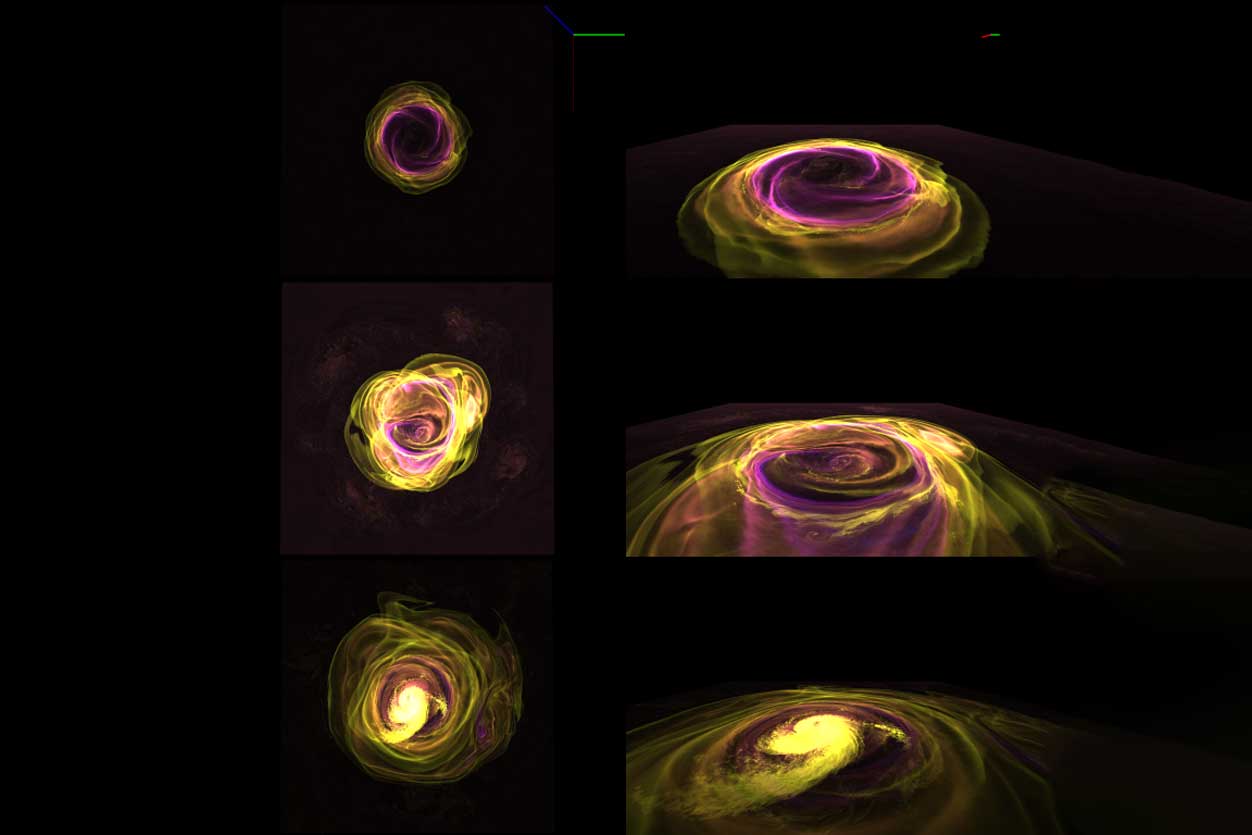
The universe is full of neutron stars, tiny remnants of supernova explosions. Since most stars are found in binary systems, a neutron star can have a stellar partner. When material from a neutron star's companion accumulates on its surface and is crushed by the star's strong gravitational pull, a thermonuclear explosion called an X-ray burst takes place.
Using the Summit supercomputer at the Oak Ridge Leadership Computing Facility, astronomers from the State University of New York at Stony Brook and the University of California, Berkeley created 3D simulations of X-ray bursts on the surface of neutron stars and compared 2D and 3D models. X-ray bursts.
The team's ability to complete 3D simulations was greatly aided by Summit's high-performance computing capabilities, further enhanced by its GPUs. GPUs took all the processing load. Using all the GPUs on a single Summit Compute node allowed the researchers to run simulations faster than all the CPU cores on the node.
Michael Zingale, a professor in the Department of Physics and Astronomy at SUNY Stony Brook, who led the project. „We can see these phenomena happening better with a simulation. We want to understand the properties of the neutron star because we want to understand how matter behaves at the extreme density that you see in a neutron star.
A comparison between the models will help researchers estimate the radius of the neutron star by constraining the size of the source.
The team's previous 2D simulation, which modeled an X-ray burst flame traveling across the surface of a neutron star, provided insights on which the 3D simulation built. How the flame propagates under various conditions, including surface temperature and rotation rate, was the focus of the 2D investigation. The results of the 2D simulation showed that different physical conditions resulted in different speeds of flame propagation.
Summit's 3D simulation expanded on those findings using the Castro code and its underlying exascale AMReX library.
To simulate the early evolution of the flame, the researchers used a 3D model with a rotation rate of 1,000 Hz and a neutron star crust temperature several million times hotter than the Sun. Because a 3D flame isn't perfectly round when moving around a neutron star, the researchers used the mass of gray matter produced by the flame to calculate how quickly a 3D flame burns compared to a 2D flame.
The growth patterns of the two simulations were similar, although the burn-in of the 2D model occurred slightly faster. The agreement of the models suggested that 2D simulation is still a valuable technique for simulating flame propagation on the surface of a neutron star.
But more complex interactions, such as the turbulence encountered by the flame on its journey due to the star's convection in the accretion layer of matter, require 3D simulations. In 2D and 3D, turbulence is fundamentally different. Also, by expanding the region of the star, they simulate and improve the physical fidelity of nuclear combustion. Researchers can add even more realism by using the „savings” they realize from following much of evolution in 2D.
They are beyond said, „We're close to modeling a flame spread across the entire star from pole to pole. It's exciting.”
Journal Note:
- Michael Zingale, Kiran Eden and Max Katz. Comparing the early evolution of flames in X-ray bursts in two and three dimensions. The Astrophysical Journal. DOI 10.3847/1538-4357/ace04e

„Oddany rozwiązywacz problemów. Przyjazny hipsterom praktykant bekonu. Miłośnik kawy. Nieuleczalny introwertyk. Student.
